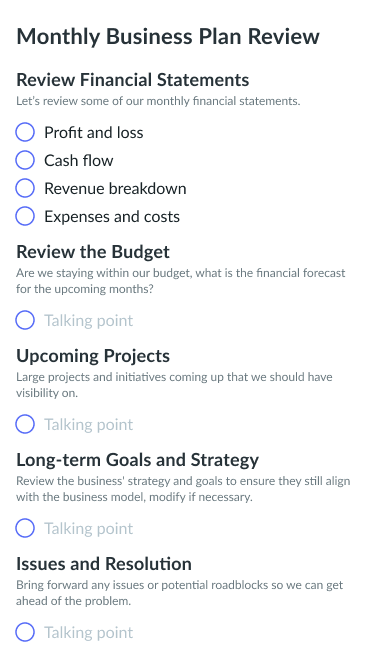Scaling a Business: Steps, Benefits, & Disadvantages
Follow these 10 steps to scale your business successfully! Plus, see the benefits and disadvantages of scaling your team.
Having a data-driven approach for your business has grown in popularity over recent years. This approach is popular in all sizes of businesses because it helps your company truly identify the root cause of problems so you can seek out the best solutions.
If you’ve been practicing data-driven approaches, you’ve put your business in a fantastic position to begin scaling. You can leverage your existing practices and data to drive bigger and better results that will benefit your business, employees, and customers.
- What does scaling a business mean?
- The benefits and disadvantages of scaling a business
- 10 steps for scaling a business
What does scaling a business mean?
Scaling a business means growing your business with the resources you have in place now, and not incurring new, additional expenses or resource requirements.
To help make the most of your plan to scale your business, it’s helpful to focus on resources that are adaptable and flexible to many environments. For example, in episode 44 of our Supermanagers podcast, Joe Martin shared this quote on why hiring athletes, not quarterbacks, will help scale your team:
“I think at a startup space, you’re looking for it to bring in a sports analogy, you’re looking for athletes. Now, if you look at college recruiting, you have quarterbacks and running backs. And then they’ll put athletes, which is like, hey, this person runs really fast, they can jump high, they can do defense and offense, let’s figure out who they are when we bring them onto the team.”
The benefits and disadvantages of scaling a business
1Benefits
- Increased productivity. By getting the right tools and processes in place, it’s easy for your existing team members to do more with their days. Consequently, your employees will produce more results and value for the company within the same amount of time that they had before.
- More opportunities for growth. As your team members become more efficient in their day-to-day work, it’s very likely that they’ll spend less time on their current projects and will have more time to dedicate to new opportunities. This can mean opportunities for the company to look at new development areas, but also means professional development growth for your employees as well!

Build a culture of effective meetings
Level up your meeting habits to boost engagement and productivity with a collaborative meeting agenda. Try a tool like Fellow!

2Disadvantages
- Additional expenses. In a lot of cases, automation or outsourcing is needed to scale your business. This cost can add up at the start, but most often, this is an investment cost to get this infrastructure in place; then, these costs don’t need to be maintained over the long term.
- More time spent training employees instead of focusing on deep work. Again, this disadvantage holds a big impact, but only in the short term. As you prepare your employees for improved ways of working and train them on the new technologies that you’ve adopted, you’ll take away from their ability to do deep work. You might see lower business results (for example, revenue) in the meantime.
10 steps for scaling a business
- Foster collaboration
- Create and celebrate milestones
- Establish standardized processes and operations
- Master management skills
- Identify your ideal customer profile
- Develop a business plan
- Understand your vision
- Develop an articulation of the company’s competitive advantages
- Invest in software
- Learn effective delegation
1Foster collaboration
Scaling requires efficiency; to have efficiency, you need alignment. This alignment needs to be across all teams and departments within your organization to ensure there are no blockers, delays, or bottlenecks occurring in any process that could deter business growth. You can foster collaboration by hosting group brainstorming sessions, getting feedback following meetings, and having a culture that encourages employees to share and receive constructive criticism during any project.
2Create and celebrate milestones
Overhauling the way your organization works can feel tiring and decrease motivation if your team isn’t seeing the results of the big changes. Creating milestones provides a goal towards which your employees can work, so they can easily measure the success of their efforts. Celebrating meeting these milestones together helps foster collaboration and builds motivation in your teams.
3Establish standardized processes and operations
Standardizing processes and operations across your organization is a small yet mighty way to make a positive impact on your efforts to scale. Some processes might need to be defined per department or team (like the process to build and deploy new product features on a software application), while others might apply across the full organization (like submitting invoices to accounting for payment). To help your team remember these processes, put them in writing (for example, on a shared Notion board) and ensure all teams have access to the documentation.
4Master management skills
Helping your employees develop exceptional management skills is part of building a foundation for success. Some of these skills include:
- Interpersonal skills for communication and problem solving
- Strategic thinking and forward planning
- Decision-making and delegation
- Organization, prioritization, and time efficiency
As you hire and build your team, it’s likely that you’re aware of many of these skills. For employees that need to develop any skills, it’s best to help them master management skills ahead of the kickoff for your scaling plans—that way, you ensure you can hit the ground running.
5Identify your ideal customer profile
Your ideal customer profile (ICP) is the “perfect” customer towards whom your business aims all of its efforts. In very large businesses that have multiple lines of business, you might encounter several ICPs, but ideally there is just one ICP per product or service offering.
Having a clear, detailed characterization of your ICP can help your employees better understand project requirements. This is part of ensuring alignment and collaboration, and getting results that drive a lot of value.
6Develop a business plan
All companies should have a business plan. The plan outlines the objectives and key results (OKRs) that the company holds for the short and long terms. As well, this plan can cover strategic decisions regarding process changes, hiring practices, budget approvals, and other important factors that can support the business’ plans. It’s recommended to meet with your management team at least once per month to review and optimize your business plan to ensure you stay on track with your scaling goals.
Interested in setting up a meeting to develop a business plan? Try using this meeting agenda template!

7Understand your vision
Before you can communicate your business plans, strategies, ICPs, goals, or new processes, you first need to have a super well-defined vision. Many of the points above go towards building your vision. However, a super clear vision that is well understood should be easy to communicate to someone who doesn’t have the same knowledge as you. That way, when you communicate the vision to a new hire, it’s easy for them to jump onboard your mission and start working towards the common goal.
Many companies might choose to use interactive presentations, storyboards, or video recordings of the CEO (chief executive officer) expressing their vision, to document and communicate the vision.
8Develop an articulation of the company’s competitive advantages
It’s not always possible to scale every aspect of your business. However, the parts of your business that are scalable can be your competitive advantage. For example, if you can automate your sales process to provide deeper information to a client faster than any other competitor, that’s an important area to understand deeply—and you should learn how to further leverage it to benefit your plans.
Forbes has a great article on this topic, writing,
“Entrepreneurs aspiring to grow their company need to “develop a clear articulation of their company’s competitive strength in the eyes of the customers, and how this strength is related to internal processes and knowledge. This needs to drive an identification of the relevant growth path in a way that allows scaling without leading into a complexity trap.”
9Invest in software
For a lot of companies, scalability happens through automation. Technology can help minimize the time your employees spend on duplicate or unnecessary work—like reporting, tracking, reminding, researching, printing, or other everyday tasks. Using tools that can take away these administrative tasks allows your team to focus more on deep work that requires their specialized skills. An example is Fellow, which can help track meeting agendas, notes, and feedback more efficiently.
10Learn effective delegation
No matter how much you care about a specific project or area of work, it’s not always possible to do everything all at once. Delegation is an incredibly important skill to build early on in your scaling process. Knowing when to work on something yourself versus when to hand it off to another person or tool to complete will be crucial in ensuring that workloads are always balanced and efficient.
Parting advice
Taking your business to the next level is exciting. There are a ton of opportunities for business and employee growth, you can build proprietary processes, and you have a shot at creating a collaborative, productive corporate culture. What you do to plan, execute, and optimize your plans for scaling will ultimately determine how high and fast you can scale. When in doubt, over-communicate with your team, get feedback as often as possible, and don’t be shy about bringing in a mentor to help guide you along the way.












